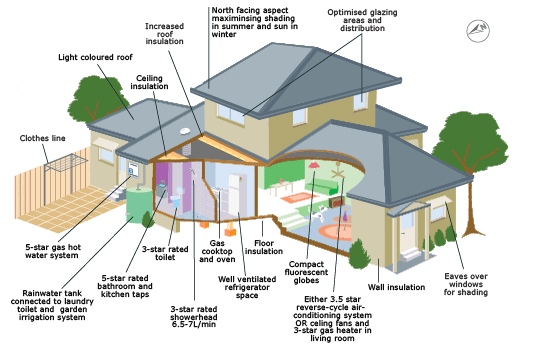Shop At Haya: Your Ultimate Shopping Guide
Discover the best shopping tips, trends, and deals for a smarter buying experience.
Is Your Home Throwing Money Out the Window? Let's Find Out
Discover hidden costs in your home! Uncover money-wasting secrets and learn how to save big. Don’t let your home drain your wallet!
10 Signs Your Home is Costing You Extra Money
Are you constantly surprised by your monthly utility bills? High energy costs can be one of the main indicators that your home is costing you extra money. Here are the first three signs to watch for:
- Poor insulation: If your home is not well insulated, heat can escape in the winter and cool air can disappear in the summer, leading to higher energy consumption.
- Drafts: Check windows and doors for any drafts that could be causing your heating and cooling systems to work overtime.
- Old appliances: If you’re using outdated appliances, they may consume significantly more energy than newer, energy-efficient models.
In addition to energy costs, there are other hidden expenses that could be draining your wallet. Consider these seven signs to determine if your home is a financial burden:
- Frequent Repairs: Regularly having to fix items can indicate underlying issues, which often adds up to unexpected expenses.
- Pest Infestations: Unaddressed pest problems can lead to costly damage and higher repair bills.
- Roof Leaks: Water damage from a leaking roof can become a major financial expenditure if not addressed promptly.
- Outdated Plumbing: Older pipes may result in leaks, leading to wasted water and increased bills.
- High Property Taxes: Make sure you are not overpaying for property taxes due to miscalculations.
- Unruly Landscaping: Overgrown yards can lead to increased maintenance costs and even local fines.
- Location Disadvantages: If your home is in a less desirable area, this could affect resale value and living costs.

Energy Efficiency Tips to Stop Wasting Money at Home
Improving your home's energy efficiency is a crucial step toward reducing your monthly bills and making a positive impact on the environment. One of the simplest ways to start is by sealing any drafts in your windows and doors. Energy efficiency can be enhanced by using weatherstripping or caulking, which helps to prevent unwanted air leaks. Additionally, consider upgrading to energy-efficient appliances, as they consume significantly less power compared to older models. When purchasing new appliances, look for the Energy Star label, which signifies that the product meets strict energy efficiency guidelines.
Another effective energy-saving strategy is to optimize your heating and cooling systems. Regular maintenance, such as replacing filters and scheduling annual inspections, can enhance the performance of your HVAC system. Moreover, installing a programmable thermostat can help you manage your energy use more effectively. For instance, you can set the thermostat to adjust the temperature when you're not at home, ensuring you're not wasting money on unnecessary heating or cooling. Lastly, consider using energy-efficient lighting solutions, such as LED bulbs, which not only last longer but also consume a fraction of the energy traditional bulbs use.
How to Conduct a Home Energy Audit: Are You Losing Money?
Conducting a home energy audit is a crucial step for homeowners who want to identify potential energy inefficiencies in their properties. Begin by evaluating your energy bills for the past year to pinpoint any unusual spikes in usage. Next, compile a list of common areas to assess, such as insulation, windows, doors, and appliances. Taking the time to systematically inspect these components can reveal how much energy you may be wasting and help you formulate a plan for improvement.
Once you've gathered your data, consider hiring a professional auditor or using a DIY approach. If you choose to conduct a self-audit, make sure to equip yourself with tools like a thermal camera and blower door test kit to measure air leaks. After identifying weaknesses, prioritize which fixes will provide the most significant energy savings. Remember, by conducting a thorough home energy audit, you're not only becoming more energy-efficient but also saving money and enhancing your home’s comfort.